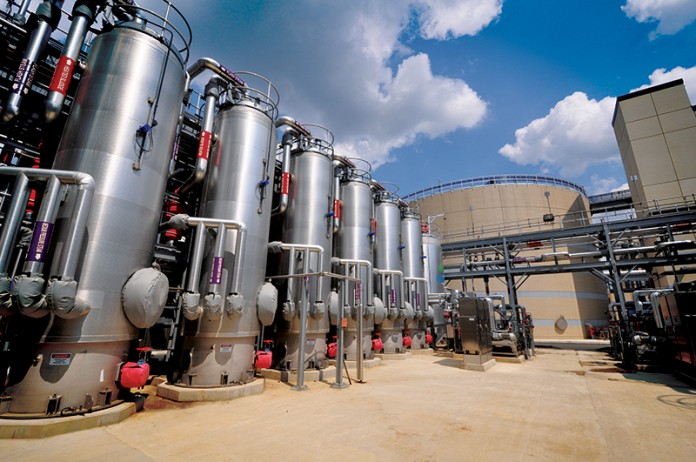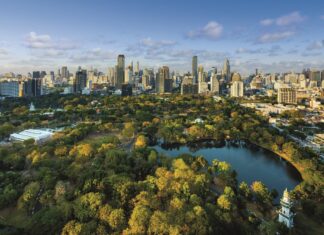Washington DC has unveiled its US$470 million waste-to-energy project that produces a net 10 megawatts (MW) of electricity from the wastewater treatment process.
The project provides clean, renewable energy to power one-third of the Blue Plains plant’s energy needs, and is the first utility provider to bring the technology to North America.
“This project embodies a shift from treating used water as waste to leveraging it as a resource,” said George Hawkins, CEO and general manager, DC Water. “We are proud to be the first to bring this innovation to North America for the benefit of our ratepayers, the industry and the environment.”
The facilities include a de-watering building, 32 thermal hydrolysis vessels, four concrete 24-metre high anaerobic digesters that hold 14,000 cubic metres of solids each, and three turbines the size of jet engines. The project was financed by bond issuance as part of DC Water’s capital improvement programme.
The project, which broke ground in 2011, uses technology from CAMBI®. Blue Plains is now the largest thermal hydrolysis installation in the world.
Thermal hydrolysis uses high heat and pressure to ‘pressure cook’ the solids left over at the end of the wastewater treatment process. This weakens the solids’ cell walls and the structure between cells to make the energy easily accessible to the organisms in the next stage of the process–anaerobic digestion. The methane these organisms produce is captured and fed to three large turbines to produce electricity. Steam is also captured and directed back into the process.
Finally, the solids at the end of the process are a cleaner Class A biosolids product that DC Water uses as a compost-like material. Biosolids are currently being used around the District for urban gardens and green infrastructure projects. DC Water is also working to bring a compost-like product to market.
Other cities are already taking an interest, with tours taking place every other week. “We hosted staff from San Francisco and Honolulu,” said Hawkins. “Any urban ‘enriched water’ system that is constrained by space and wants to achieve multiple benefits may be well advised to take a look.”
He added: “DC Water and many others are demonstrating that with a careful analytical programme to review new ideas and field test them in advance, we can adopt new technologies–even at a massive scale–and deliver better results for our customers, for our city, and for the environment.”








